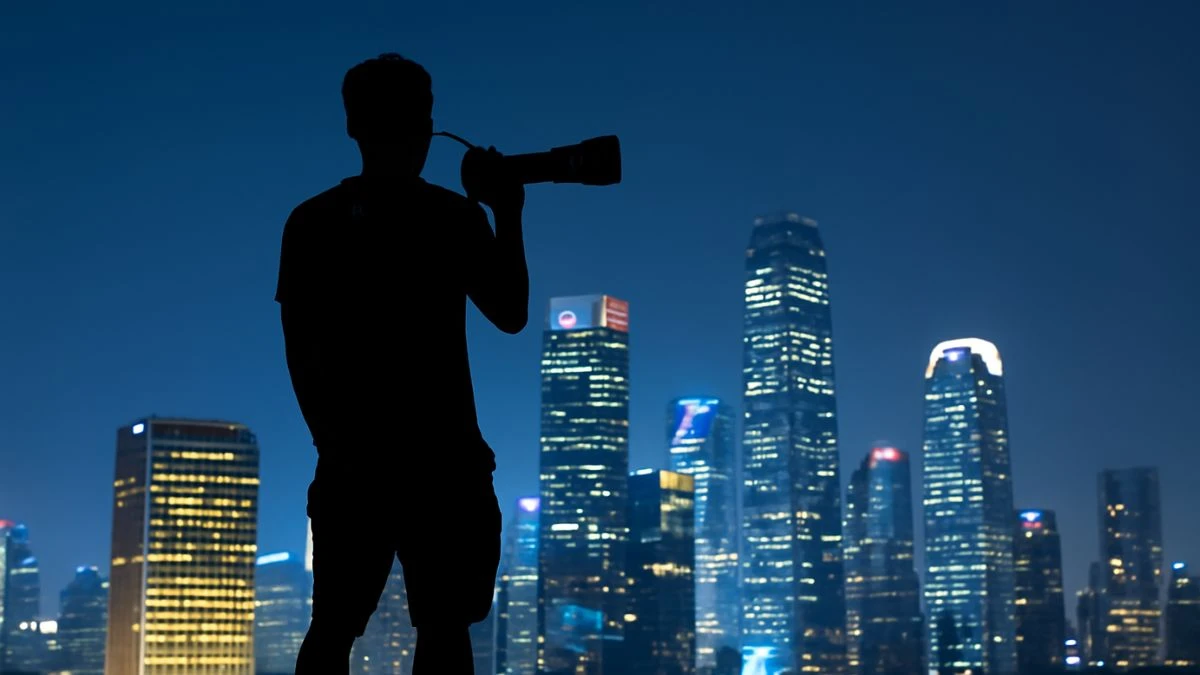Top 5 Best Camera for Night Photography in 2025
Night photography possesses an almost mystical quality that transforms ordinary landscapes into extraordinary works of art.
Whether photographers are capturing the ethereal glow of the Milky Way stretching across a star-filled sky, the dramatic interplay of city lights against darkness, or the subtle beauty of moonlit scenes, night photography offers endless creative possibilities.
However, shooting in low light presents unique challenges that demand specialized equipment. Issues like digital noise, focusing difficulties, and the need for extended exposures can make or break nocturnal images.
The good news is that 2025 has brought remarkable advances in camera sensor technology, with manufacturers pushing the boundaries of low-light performance like never before.
Modern cameras now offer incredible high ISO capabilities, advanced autofocus systems that work in near darkness, and improved image stabilization that opens up new creative possibilities.
This comprehensive guide examines the top five cameras that excel in night photography, helping photographers choose the perfect tool to capture the beauty that emerges when the sun goes down.
| Rank | Camera |
|---|---|
| 5 | Canon EOS R8 |
| 4 | Nikon Z6 III |
| 3 | Sony A7S III |
| 2 | Sony A7R V |
| 1 | Canon EOS R6 Mark II |
5. Canon EOS R8 - Best Budget Night Photography Camera
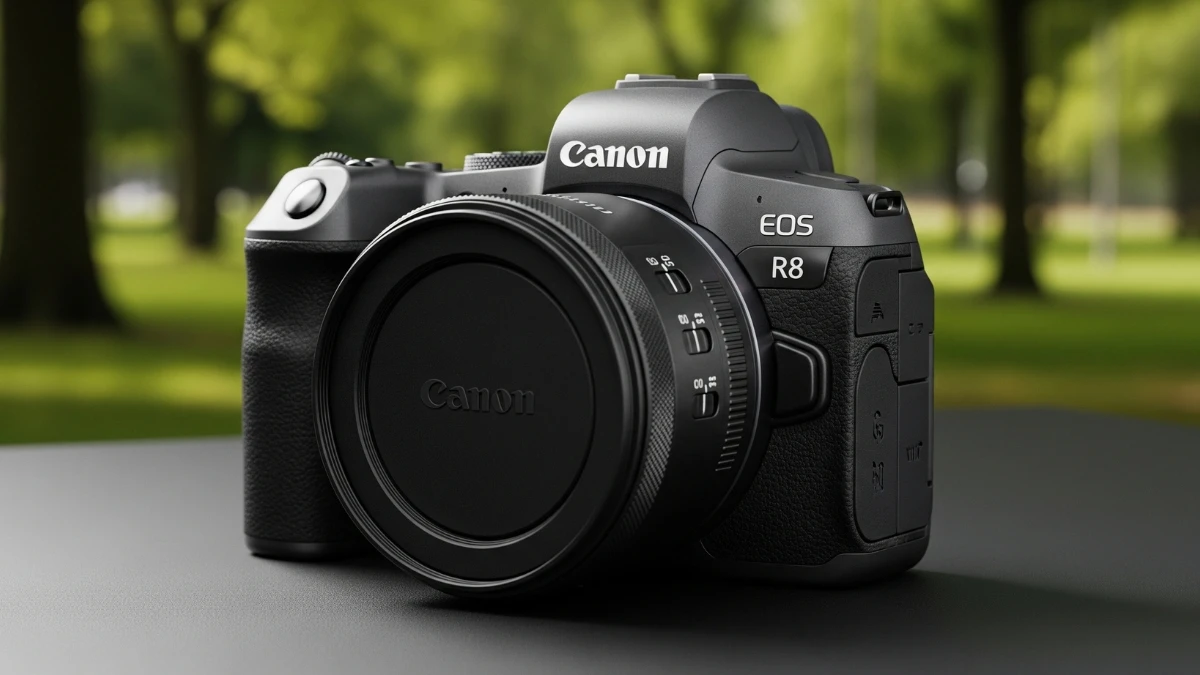
The Canon EOS R8 is listed among the best cameras for Milky Way photography and offers exceptional value for night photography enthusiasts.
Key Specifications:
- 24.2MP full-frame CMOS sensor
- ISO range: 100-102,400 (expandable)
- No in-body image stabilization
- 4K video recording
- Single SD card slot
- Compact, lightweight design
Night Photography Strengths:
For instance, the R8 doesn't have image stabilization. No bother, many of the lenses do, plus you don't need it for astro anyway. It's also not fully weather-sealed. That's fine, you won't be doing astrophotography when it's raining.
Despite being the most affordable option on this list, the R8 shares much of the same sensor technology as more expensive Canon cameras, delivering surprisingly good low-light performance.
Real-World Performance:
The R8 produces clean images through ISO 1600, with usable results extending to ISO 6400 for most applications. While it lacks some premium features, the core image quality rivals much more expensive cameras.
Pros:
- Excellent value for money
- Full-frame sensor at entry-level pricing
- Compact and lightweight
- Access to Canon's RF lens ecosystem
- Good high ISO performance for the price
Cons:
- No in-body image stabilization
- Limited weather sealing
- Single card slot
- Shorter battery life
- Fewer professional features
Best Use Cases: Budget-conscious photographers wanting to enter full-frame night photography, travel photographers prioritizing portability, and hobbyists who don't need professional features.
4. Nikon Z6 III - Best Performance Balance
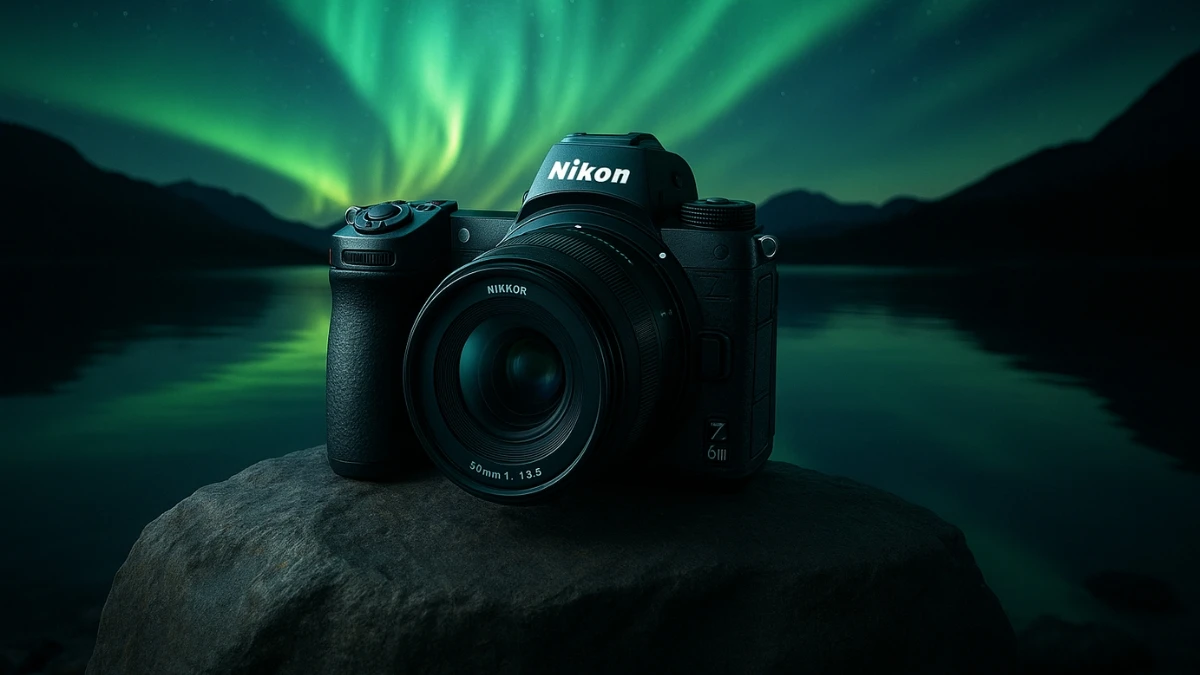
Camera experts have identified the Nikon Z6 III as a stand-out stills camera in 2025, impressed by its speed, performance and image quality.
Key Specifications:
- 24.5MP full-frame CMOS sensor
- ISO range: 100-64,000 (expandable to 204,800)
- 5-axis in-body image stabilization
- 6K video recording
- Dual card slots (CFexpress Type B and SD)
- Weather-sealed construction
Night Photography Strengths:
The Z6 III strikes an excellent balance between resolution, low-light performance, and overall versatility. The ISO can be pushed all the way up to 102,400.
Of course, at the upper end photographers will notice noise, but clean, detailed images can be achieved right up into that higher bracket. Plus, the illuminated buttons and night vision mode make this camera one of the best astrophotography cameras available.
Real-World Performance:
The Z6 III delivers consistently clean images through ISO 3200, with acceptable results extending to ISO 12,800 and beyond.
The night vision mode and illuminated controls make it particularly user-friendly for astrophotography sessions.
Pros:
- Excellent high ISO performance
- Intuitive handling and controls
- Night vision mode for astronomy
- Strong video capabilities
- Competitive pricing
Cons:
- Smaller lens ecosystem than Canon/Sony
- Battery life could be improved
- Limited third-party lens options
Best Use Cases: Photographers wanting excellent all-around performance with particular strength in night photography, especially those already invested in the Nikon ecosystem.
3. Sony A7S III - Best for Night Video

The Sony A7S III is listed among the best digital cameras for Milky Way photography and represents the pinnacle of low-light video performance.
Key Specifications:
- 12.1MP full-frame CMOS sensor
- ISO range: 80-102,400 (expandable to 409,600)
- 5-axis in-body image stabilization
- 4K video at 120fps
- 16-bit RAW video output
- Dual card slots
Night Photography Strengths:
The A7S III's relatively low 12.1-megapixel resolution might seem limiting for stills, but it provides massive advantages for low-light performance.
The larger photosites collect more light, resulting in exceptional high ISO performance that surpasses most other cameras.
Real-World Performance:
For video work in extreme low-light conditions, the A7S III is unmatched. It can capture usable footage at ISO settings that would be unusable on other cameras.
For stills, while the resolution is limited, the image quality in challenging lighting conditions is remarkable.
Pros:
- Unparalleled low-light video performance
- Exceptional high ISO capabilities
- Professional video features
- Reliable autofocus in darkness
- Excellent build quality
Cons:
- Limited resolution for stills photography
- Expensive for dedicated stills photographers
- Requires CFexpress cards for optimal performance
Best Use Cases: Videographers specializing in low-light content, documentary filmmakers, and photographers who prioritize extreme low-light performance over resolution.
2. Sony A7R V - Best High-Resolution Night Photography Camera
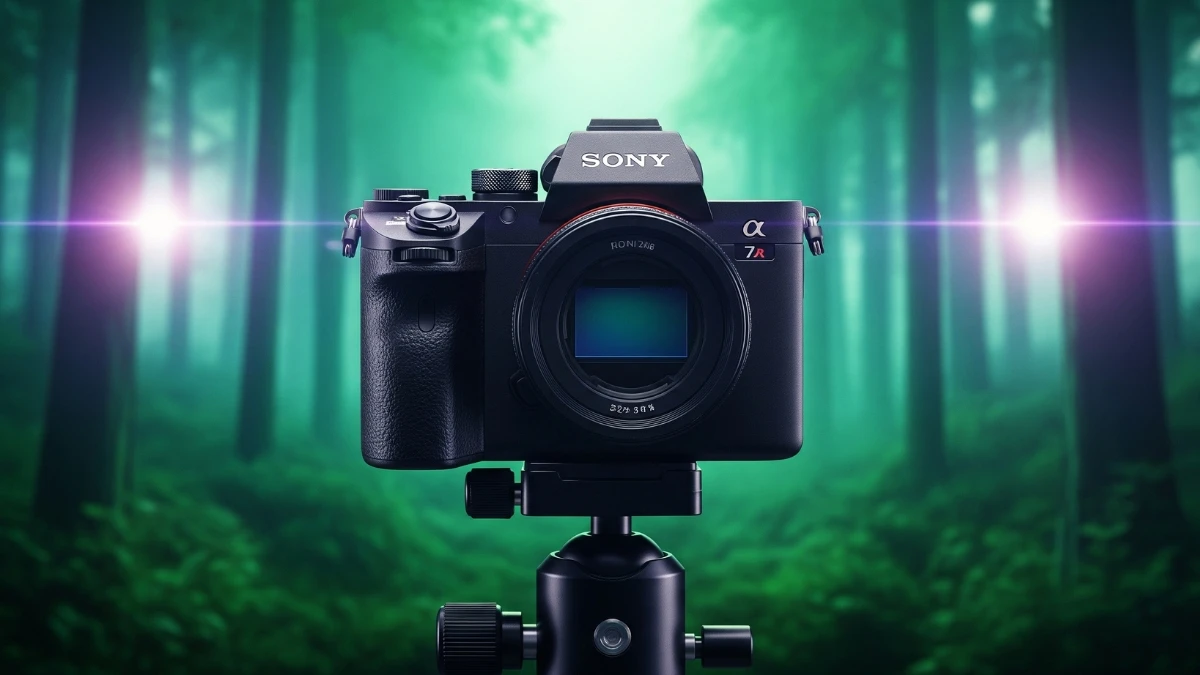
The Sony A7R V builds on the power of its predecessor with its higher resolution EVF and LCD screen, more stops of image stabilization and a new AI autofocus unit, proving to be a fantastic contender for low-light photography.
Key Specifications:
- 61MP full-frame CMOS sensor
- ISO range: 100-32,000 (expandable to 102,400)
- 5-axis in-body image stabilization
- AI-powered autofocus system
- 8K video recording capability
- Dual card slots (CFexpress Type A and SD)
Night Photography Strengths:
This, coupled with the newer AI-powered autofocus found in Sony's newer cameras, makes it an absolute powerhouse for low-light photography — whether that be shooting indoors, low-light portraiture or nighttime cityscapes.
The 61-megapixel sensor provides incredible detail for large prints and allows extensive cropping flexibility. Despite the high resolution, noise performance remains excellent through the mid-ISO range.
Real-World Performance:
The A7R V excels in situations where maximum detail is paramount. The high resolution reveals intricate star field details and allows for stunning large-format prints of night landscapes.
The AI autofocus system reliably tracks subjects even in challenging lighting conditions.
Pros:
- Highest resolution in its class
- Advanced AI-powered autofocus
- Excellent dynamic range
- Superior electronic viewfinder
- Professional video capabilities
Cons:
- Expensive for most users
- Larger file sizes require more storage
- Battery life could be better
- Overkill for some applications
Best Use Cases: Professional photographers who need maximum resolution for commercial work, fine art prints, or situations requiring significant cropping flexibility.
1. Canon EOS R6 Mark II - Best Overall Night Photography Camera
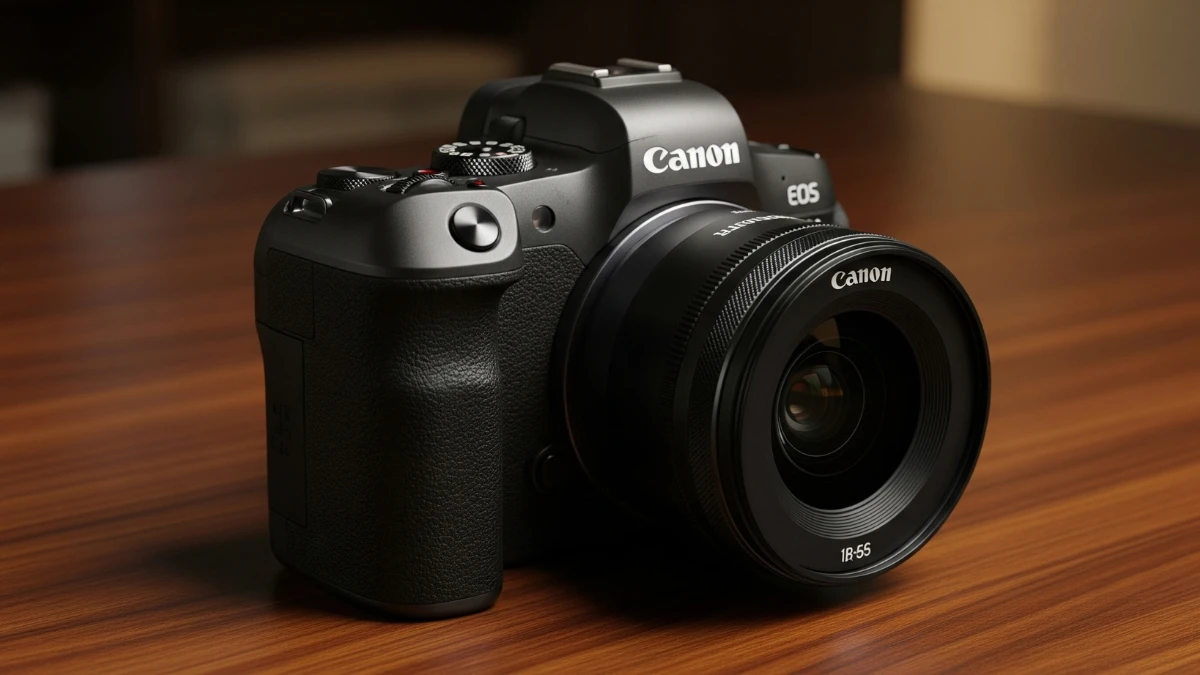
The Canon EOS R6 Mark II is the best camera for low light that has been tested. It improves upon the Canon EOS R6 in several ways, including a higher-resolution sensor, an updated autofocus system, and improved video features.
Key Specifications:
- 24.2MP full-frame CMOS sensor
- ISO range: 100-102,400 (expandable)
- Up to 8 stops of in-body image stabilization
- 4K video at 60fps, 6K external recording
- Dual SD card slots
- Weather-sealed construction
Night Photography Strengths:
The Canon EOS R6 Mark II is considered one of the best Canon cameras available for low light and astrophotography, thanks to its low-light features and excellent high ISO handling.
The camera consistently produces clean, detailed images right up to ISO 1600, with usable results extending well beyond ISO 6400.
The advanced autofocus system works remarkably well in low light conditions, making it easier to achieve sharp focus on stars and distant subjects.
The improved battery life delivers approximately 760 shots per charge, and photographers can charge the camera while shooting for extended sessions.
Real-World Performance:
In astrophotography testing, the R6 Mark II excels at capturing the Milky Way with minimal noise and excellent detail retention. The camera's dynamic range preserves both shadow detail in foreground landscapes and highlight information in bright star cores.
Pros:
- Exceptional high ISO performance
- Reliable low-light autofocus
- Excellent build quality and weather sealing
- Strong battery life for night photography
- Versatile for both stills and video
Cons:
- Lower resolution than some competitors
- Premium pricing for entry-level users
Best Use Cases: Ideal for serious enthusiasts and professionals who need reliable performance across all night photography genres, from astrophotography to urban night scenes.
What Makes a Great Night Photography Camera?
Understanding the technical requirements for night photography is crucial before investing in new equipment.
Several key factors separate exceptional low-light cameras from their average counterparts, and knowing these specifications helps photographers make informed decisions.
Full-Frame vs Crop Sensors: The Light-Gathering Advantage
The sensor size debate becomes particularly important in night photography. Full-frame sensors excel in low-light conditions because their larger surface area captures more light compared to smaller sensors, such as APS-C or Micro Four Thirds.
This improved light sensitivity results in reduced noise and enhanced dynamic range, making them ideal for night photography.
While crop sensor cameras can still produce excellent results, especially when paired with fast lenses, full-frame cameras provide a significant advantage in extreme low-light situations.
The larger photosites on full-frame sensors collect more photons, resulting in cleaner images at higher ISO settings.
High ISO Performance: The Foundation of Night Photography
A camera with excellent high ISO performance ensures photographers can shoot in low light or near darkness without introducing excessive noise, which often diminishes image quality.
Photographers should look for models capable of clean images at ISO 3200 or even ISO 6400. These are the most commonly used ISO settings for dark skies, while cityscapes are typically captured in the ISO 800-1600 range.
Manual Controls and RAW Capability
Professional night photography requires complete control over camera settings. Manual mode allows photographers to precisely adjust aperture, shutter speed, and ISO to achieve their creative vision.
Equally important is the ability to shoot in RAW format, which preserves maximum image data for post-processing flexibility.
Image Stabilization Benefits
While image stabilization isn't essential for tripod-mounted astrophotography, it becomes invaluable for handheld low-light shooting and can help achieve sharper images when using longer focal lengths.
Battery Life Considerations
Cold temperatures and long exposures can quickly drain camera batteries. Night photographers often spend hours in the field, making excellent battery life and the ability to use external power sources crucial considerations.
Budget Recommendations:
- Under $1,500: Canon EOS R8
- $2,000-$2,500: Canon R6 Mark II or Nikon Z6 III
- $3,500+: Sony A7R V or A7S III
Scenario-Based Recommendations:
- Astrophotography: Canon R6 Mark II or Nikon Z6 III
- City night photography: Sony A7R V
- Night videography: Sony A7S III
- Travel night photography: Canon EOS R8
Essential Accessories for Night Photography
Great night photography requires more than just an excellent camera. The right accessories can make the difference between frustrating shooting sessions and successful captures.
Tripods: The Foundation of Stability
A sturdy tripod is absolutely essential for night photography. Long exposures ranging from several seconds to several minutes require rock-solid stability.
Photographers should look for carbon fiber tripods that offer excellent stability while remaining lightweight for travel. Features like spiked feet, hooks for adding weight, and smooth pan/tilt heads are particularly valuable.
Fast Lenses: Maximizing Light Gathering
Wide-aperture lenses (f/1.4 to f/2.8) are crucial for night photography. They allow more light to reach the sensor, enabling faster shutter speeds and lower ISO settings.
For astrophotography, ultra-wide lenses (14-24mm) capture expansive star fields, while fast 50mm and 85mm lenses excel for night portraits and cityscapes.
Remote Triggers and Intervalometers
Camera shake from pressing the shutter button can ruin long exposures. Remote triggers eliminate this issue and often include intervalometer functions for time-lapse photography.
Many modern cameras also offer smartphone apps that provide wireless control.
Power Solutions for Extended Sessions
Night photography sessions often last several hours, and cold temperatures can significantly reduce battery life.
Photographers should invest in multiple spare batteries and consider external battery grips or USB-C power banks that can keep cameras running throughout the night.
Memory Cards and Storage
RAW files from high-resolution cameras can quickly fill memory cards. High-speed cards (UHS-II or CFexpress) ensure fast write speeds for burst photography and prevent buffer limitations.
Photographers should always carry spare cards and consider a portable backup solution for valuable captures.
Night Photography Tips for Better Results
Camera Settings Guide
Photographers should start with the "500 Rule" for astrophotography: divide 500 by the lens focal length to determine the maximum shutter speed before star trails become visible.
For example, with a 24mm lens, the maximum exposure would be 20 seconds (500 ÷ 24 = 20.8).
For optimal results, photographers should shoot in manual mode with single-point autofocus. Beginning with ISO 1600-3200, aperture wide open (f/1.4-f/2.8), and adjusting shutter speed based on the subject works well. Using the camera's histogram helps avoid clipping highlights or shadows.
Composition Techniques
Including interesting foreground elements creates depth and context in night images. Leading lines like roads, shorelines, or rock formations guide the viewer's eye through the frame.
The rule of thirds applies to night photography just as it does during the day.
Post-Processing Basics
RAW processing is crucial for night photography. Photographers should focus on noise reduction, highlight/shadow recovery, and color balance adjustment.
Specialized software like Adobe Lightroom, Capture One, or dedicated astrophotography tools like PixInsight can dramatically improve results.
Location Scouting
Photographers should scout locations during daylight to identify compositions and potential hazards. Apps like PhotoPills or Star Walk help predict celestial events and optimal shooting times.
Considering light pollution levels and seasonal variations in the night sky is important for planning.
Disclaimer
The content in this article is intended for general informational purposes only. While we strive to provide accurate and up-to-date details, the performance and suitability of the cameras listed for night photography may vary depending on individual needs, preferences, and shooting conditions. Results from different cameras can be influenced by various factors such as lens selection, settings, and environmental variables. We recommend conducting further research, reading user reviews, and consulting experts before making any purchasing decisions.

